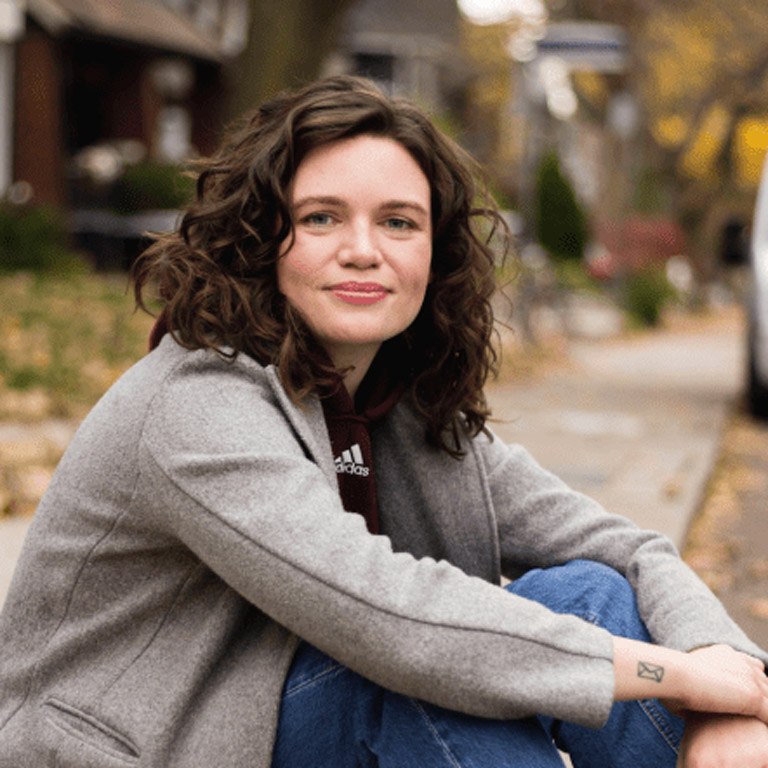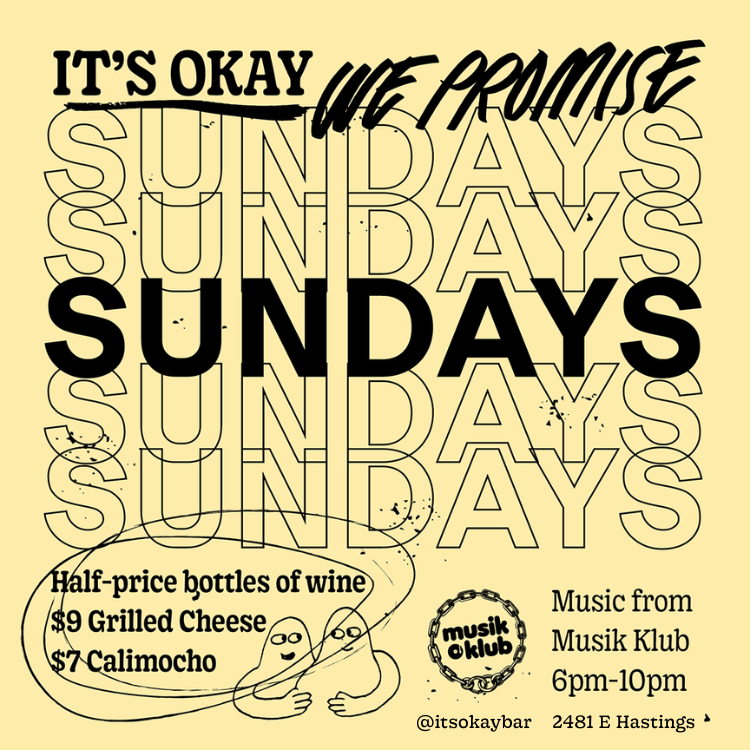“Letting Go” by Aidan Farrell.
“It started as this kind of coping mechanism,” says Aidan Farrell. “But then became a thing that started bringing me a lot of joy and freedom of expression.” For the last few months, Farrell has been creating drawings and paintings of herself, friends and family as the “cosmic versions” of themselves. What started as a form of visual journaling to help her handle the stress of the pandemic has turned into a series of paintings and drawings, in which Farrell’s subjects are as much a part of the cosmos as the stars and galaxies that cover their skin.
Farrell is a professional artist, but she does not practice visual art professionally. As a professional vocalist, musician, composer and leader of the Toronto-based band Goddess, Farrell has turned to visual art during a time when live music is off-limits amidst COVID-related closures and restrictions.
With the arts in general taking huge financial hits during the pandemic, or, in the case of theatre or live music, being indefinitely put on hold, many have rightfully observed that these are difficult times to be a professional artist. However, while their main artistic endeavors are on pause, some Canadian artists are turning amateur by taking up a new art form – and, in doing so, they are exploring the creative potential of rest, financial security, and having the time and energy to try something new.
Like Farrell, Jess Goldman came upon a new form of artistic expression as a way of handling pandemic-related stress. Goldman, a fiction writer and the author of the recently released Schmutz, a collection of queer Yiddish folklore, found herself “needing something during the pandemic that was tactile…that I could sort of do with my hands so I wasn’t just so inside my head all the time.” Upon discovering Yiddish puppet theatre, Goldman says that she has seen the light, and since then has been making puppets out of paper mache. The puppets themselves pay tribute to the history of Yiddish puppet theatre, often portraying historical figures who were Yiddish, queer and communist – like Eve Adams and Claude Cahun.

Both Farrell and Goldman expressed that the pandemic has become a fruitful moment for them to try something new, in part due to financial aids like CERB, CRB and EI. As young artists, financial security can be elusive. Often, income from artistic work is inconsistent and underpaid, and many Canadian artists have side-hustles or part-time jobs that may or may not have anything to do with their professional or creative aspirations. In turn, adequate amounts of rest and free-time can be almost unheard of. Balancing multiple jobs while trying to get artistic projects off the ground doesn’t leave much time for days off.
CERB, CRB and the newly modified EI have, for some artists, provided a new-found financial stability while hours at joe-jobs and artistic work alike are cut back or cut out due to the pandemic. This combination of financial consistency and being better rested is a huge part of what has allowed Farrell and Goldman to take on new projects.
Farrell noted that “not having to trade your hours for income, it opens up so much. Which, shocker, when you feel rested you feel way more creative and good and you’re not just stressing about making ends meet. You have way more time to explore and to play.”
In our regular nine-to-five work world, Farrell wonders if people ever really get to feel rested or if they’re always just left wondering when it’s going to get easier.
Goldman says that taking on puppet making in a pre-pandemic world would have left her way more stressed out. “I really have felt that just having the time to sort of stew and be in the space of creativity for longer without being interrupted by work or just being so tired after working… it’s conducive. You need that time, and to be involved in your art in ways that aren’t necessarily directly doing it,” says Goldman, citing recreational reading and researching as activities that keep her inspired and require time in their own right.
With CERB and the like fostering more conversations about the potential of Universal Basic Income in a post-pandemic world, Farrell hopes more people will recognize that what once seemed like a “wild dream” is possible – and not only for artists. “Everyone makes creative choices all day every day,” she says, suggesting that if we were free from the constant exhaustion of worrying about money, it would make those choices more playful while also protecting all people’s rights to basic dignities.
While pandemic conditions have inspired these new creative endeavours, Goldman is looking at puppet theatre as a longer term project.
“[Puppet theatre] represents so much of what I love about Yiddish culture and Jewish Culture and this sense of playfulness and humour,” she says.
“But it’s also something that’s supposed to be engaged with the community and with the people.” She mused about whether a Yiddish puppet theatre might need to exist again in a time when people are able to gather.
Farrell simply expressed a hope that this period of slowing-down will allow her to return to creative work with a renewed sense of gratitude. She says that she looks forward to “going back to music with a sparkly, beautiful, child-like appreciation – because it’s a gift, not a grind.” Who knows, perhaps this time of rest and recuperation might turn out to be a gift in and of itself.




